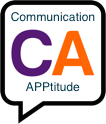Rebecca Silverman and Anna Hartranft discuss the dimensions of vocabulary in terms of breadth and depth in their book, Developing Vocabulary and Oral Language in Young Children.
Breadth refers to "having at least surface-level knowldege" of many vocabulary words. For example, I've heard and read the word, perspicuous. I know it has something to do with the word "look," but I'm not sure I could use it correctly in writing or while speaking. This means I have a surface-level knowledge of perspicuous, but not a strong, healthy knowledge.
Depth of vocabularly refers to a "robust" or strong, healthy knowledge of a word. It involves knowing the "many different facets of words," including how it sounds (phonology), the written form (orthography), other forms of the word (morphology), it's grammatical use (syntax), meanings and how it relates to other words (semantics) and how to convey meaning to others (pragmatics). Whew! That's a lot of knowledge - deep and broad knowledge.
Having broad and deep knowledge of a word means that when children hear or read the word, they will fully understand it. This is what we need to be working towards in the classroom and in language therapy. Completing worksheets, taking quizzes, and using vocabulary words in a sentence does not always go far enough into helping our students with language-based learning difficulties tap into a deeper knowledge of vocabulary.


No comments:
Post a Comment